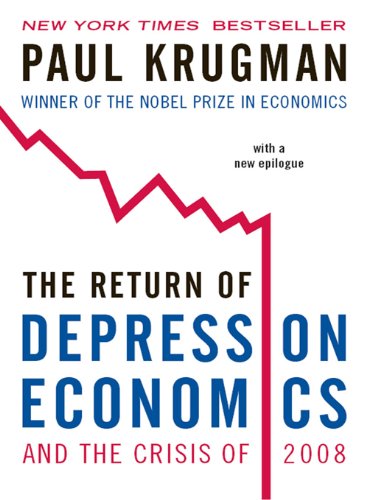Food or War, Julian Cribb, Cambridge University Press, 2019, pp. 336, ISBN 978-1-108-71290-3
Paul R. Ehrlich claims to have understood overpopulation intellectually for a long time before the publications of his The Population Bomb in 1968. In the first chapter of the bestseller, Ehrlich recounts how he came to understand it “emotionally one stinking hot night in Delhi,” while in an “ancient taxi” with his wife and daughter. “As we crawled through the city, we entered a crowded slum area. The temperature was well over 100, and the air was a haze of dust and smoke. The streets seemed alive with people. People eating, people washing, people sleeping. People visiting, arguing, and screaming. People thrusting their hands through the taxi window, begging. People defecating and urinating. People clinging to buses. People herding animals. People, people, people.” This “hellish” scene led Ehrlich to predict worldwide famines in the ‘70s and ‘80s, to be followed by social upheaval, violence and war. Ehrlich’s prediction that hundreds of millions will die in these decades and that no crash programs will prevent the death toll was, of course, proven false. Nonetheless, he advocated numerous conscious ways to achieve population control, one of them being to add sterilants to people’s staple food or water supply. He also suggested that the US adopt a foreign policy which would see it cut off all food aid to countries whose population outstripped its ability to feed itself, leaving the population to die.
And yet, Julian Cribb dedicates his newest alarmist tome to Paul R. Ehrlich.
In Food or War, Cribb warns us that our unsustainable food systems will not be able to feed an ever-growing population if it continues unchanged. As he states, the biggest threat humanity faces come from the human jawbone. In the course of producing enough food to feed the current population, we inevitably destroy the source of that food. The current food production system, Cribb reminds us, depletes 75 billion tonnes of topsoil, consumes 7 billion tonnes of freshwater, while injecting 5 million tonnes of biocide and emitting 30% of the total greenhouse gas emissions. The combined effect of climate change and the unsustainable food system will plunge the world into conflict. However, Cribb does not name or explain the economic imperative behind the food production system that generates incredible amounts of waste, while some go hungry.
Cribb presents a brief historical survey from the ancient times up to the present to conclude that wars have been fought over food access, and that food has been weaponized by belligerents to starve their opponents in order to win wars. Food, therefore, poses a mounting threat to world peace, and Cribb presents us with a brief description of ‘powderkeg regions,’ that is, locations where future conflicts over food are possible. Following in Ehrlich’s footsteps, the highest risk is placed on South Asia, not least because India and Pakistan possess nuclear weapons. According to Cribb, climate change will affect the crop yield, leading to population upheaval and potential nuclear winter, which would affect “two billion people in India and China [who] would starve within months.”
While Cribb does note throughout the book that people in richer countries tend to consume more and produce more waste than people in poor countries, it does not seem to affect his analysis. Yet, it is obvious that sustaining food consumption patterns in the West, where, for example, in 2018, an average American ate 222.2 pounds of red meat and poultry, is what causes problems for other populations globally. In Bangladesh, on the other hand, an average person would consume 8.8 pounds per year. Cattle ranching is responsible for 80% of the deforestation of the Amazon, which is required in order to supply the meat market globally. It is not necessarily the production of the meat itself that leads to climate change, nor is it the monolithic West, rather, it is the economic system that requires continuous expansion and environmental degradation for its continued existence while also generating growing inequality. Profit is generated by producing an ever-greater quantity of goods which are consumed in exchange for money, or otherwise, thrown out. Production for profit, not for sustenance, is what leads to corporations using pesticides and biocides, clearing land, depleting topsoil and freshwater resources. For Cribb, though, “at the heart of the transition to a renewable food revolution taking place in green cities and on eco-farms around the world” are we. Our wallets have the power to change the world, by signalling to the producers how we wish our food to be produced. This could hardly be seen as the planetary effort needed to affect change.
Cribb offers other recommendations in the book to solve the conundrum of food or war. Some center on better stewardship of the Earth achieved through ecological and regenerative farming, aquaculture and rewilding. Others focus on political aspects aimed to prevent societal breakdowns, such as redirecting 20% of military budgets to a ‘peace through food’ program, to be used for rewilding, education, and sustainability programs. While theoretically a sound idea, Cribb fails to outline how we get there, given that annual military budgets increase every year. How do our wallets make the politicians decrease military spending?
Food or War parrots old ideas and synthesizes the newest research into our climate-changed world. The threat of food system collapse is real, and the effect it may have on large swathes of the impoverished is devastating. However, Cribb has failed to pinpoint the cause of this failure and to provide solutions to them. Just like Paul R. Ehrlich.




